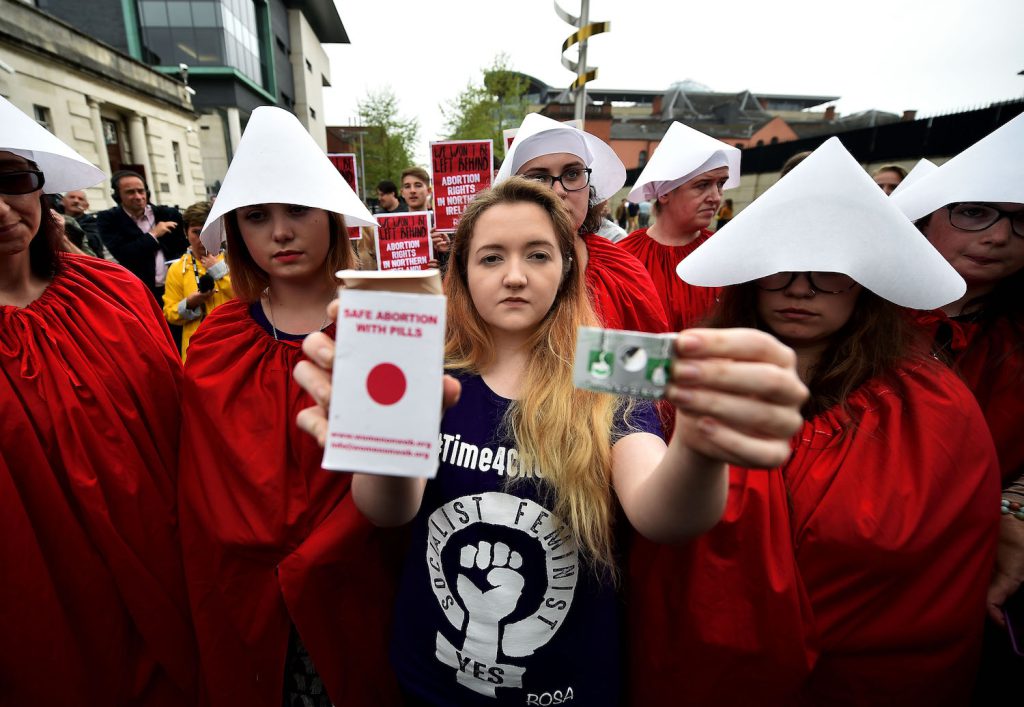We Should Talk More About the Abortion Pill

On May 2, a leaked Supreme Court draft majority opinion laid bare the very real possibility of overturning Roe v. Wade in the United States. If the constitutional protection of the right to abortion is lost, at least 13 states are expected to ban abortion almost immediately. This news is a massive shake-up in the polarized abortion debate, forcing activists on both sides of the issue to make declarative claims to the meaning of abortion within U.S. culture.
What do we in the U.S. really know about those who seek abortions? Thanks to research across the social sciences, we know the “typical” abortion patient is already a parent, lives in a blue state, is early in her pregnancy, and has some college education. We also know—based on a recent long-term study by a team of scientists from the University of California, San Francisco—that people who are denied abortions are more likely to experience physical and mental health issues, to live in poverty for years after, and to stay in abusive relationships.
But we don’t know nearly enough about the cultural impact of the abortion debate in the U.S. Anthropologists interested in abortion have examined “pro-life” and “pro-choice” factions as subcultures that take on distinct local identities while tied up in global flows of politics and power. Still, despite its massive impact on political debate, abortion remains understudied and taboo in the U.S. Little is understood about the people who participate in abortion activism, or about how the public’s ideas about abortion are being reshaped by new forms of technology.
Read on, from the archives: “Abortion Rights Are Being Eroded”
As a feminist anthropologist who studies reproductive justice, I am motivated by my own activist commitments to protect abortion access around the world.
During my time studying the abortion activism movement in Ireland, I saw that pro-choice activists were inspired by movements in other countries while remaining aware of the distinct challenges of fighting for reproductive rights in a historically Catholic nation. Yet in Ireland, it was not just the national values and historical precedents that shaped activists’ strategies. It was the introduction and use of a new technology, the abortion pill, that really shook things up.
Since being legalized in 2000 in the U.S., these pills have transformed access to abortion. But the language and imagery around reproductive rights still reflect a time when abortion seekers sometimes turned to dangerous methods of inducing abortion. While the idea of the “back-alley butcher” is largely a myth, many activists today continue to rely on the powerful visuals of coat hangers or a “dirty knife and a folding table” to fight for reproductive rights. These social and activist arguments worked in 1973 when Roe v. Wade was passed, but they do not represent the material realities or the legal challenges facing abortion access today.
The popular media has begun to pay attention to the abortion pill as an underused “back-up plan” to U.S. state bans. At the same time, anti-abortion activists are also targeting pills as a new battleground for the abortion debate, with 19 states already banning prescriptions by telemedicine. Criminalization of abortion pills is most likely to affect poor people of color, undocumented folks, or those otherwise marginalized.
If U.S. activists today want to mount an effective campaign to protect abortion rights, our cultural narratives must change. And we need to start by talking more about the abortion pill.
The abortion pill, also known as a “medication abortion,” typically involves five separate pills made up of two different medicines. A patient first takes one pill (200 mg) of mifepristone, then four pills of misoprostol (200 mcg) 12 to 48 hours later. Mifepristone blocks the progesterone needed to support pregnancy, while misoprostol induces uterine cramping and bleeding. This regimen is extremely effective at safely terminating a pregnancy, especially when used within the first trimester.
As of 2020, abortions by medication make up more than half of all abortions in the United States. This is expected to rise even higher in the face of tightening restrictions in many states.
In countries where they are legal, the pills can be obtained from a medical professional (whether in person or through telemedicine) as an alternative to a clinical abortion procedure. Increasingly, in the U.S. and elsewhere, people are also practicing “self-managed abortions” by sourcing their abortion medication from online or overseas pharmacies and using them outside of the medical system.
Self-managed abortion is not merely a backup plan to a fully legal abortion but a legitimate choice people might make for a variety of reasons: to reduce costs, to deliberately avoid contact with medical systems for fear of stigma, to circumvent restrictive laws, or to take control over the abortion experience as a feminist act.
When abortion was illegal in Ireland, thousands of people per year were self-managing their abortions using medication purchased online. This was a shift away from a pattern that had existed for decades, where those seeking abortions were forced to travel abroad to clinics in England. The ability to have an abortion on the island of Ireland using these pills was revolutionary.
In 2014, Irish activists boarded a train to Belfast to retrieve abortion pills obtained abroad. They returned to Dublin with their contraband, holding up the pills and even swallowing them in front of the media to raise awareness about the option and show that the pills are safe. This “abortion pill train” protest was part of a new activist strategy of normalizing abortion. It allowed the average person to “witness” the practice in ways they never could have before. These activists’ creative use of the abortion pill technology helped reframe the images and ideas of abortion in the public eye in Ireland, contributing to a landslide vote in favor of legalizing abortion in 2018.
With the legal changes poised to take place in the United States, these kinds of strategies may help abortion-rights activists grapple with the new and shifting cultural narratives that medication abortion brings.
Though the rise in abortion by pill has already changed how many people access abortion, our cultural models for talking about abortion have not caught up. This is largely because many people in the U.S. still do not know what abortions pills are or how much they have changed abortion access globally.
In response to the Supreme Court news last week, many argued we were headed “back to the back alley.” Protesters took to the streets brandishing coat hangers, the old symbol of abortion rights and specter of their lack. Pundits argued that “illegal abortion just means unsafe abortion.”
Unintentionally, these narratives misinform the public about the options that do exist for accessing medically safe abortions in the U.S. and in many parts of the world. Legal bans on abortion access do not have to mean forced pregnancies.
Abortion pills will never replace the need for legal protection of all abortions: Clinical procedures are still needed for abortions occurring at later gestational ages and for people with medical contraindications to the pills. However, embracing abortion pills should be a key strategic message for the movement for reproductive justice, especially as pro-life politicians are already pushing forward bills to limit their access.
In December 2021 during a protest at the U.S. Supreme Court, activists from the group Shout Your Abortion were filmed taking abortion pills in front of a banner reading: “We are taking abortion pills forever.” They join a growing global movement—from Ireland to Brazil—advocating for medication abortion as a central new frontier in the ongoing fight for reproductive rights. But among many in the U.S., the coat hanger still holds more meaning than a handful of pills.
It is time to hang up our coat hangers. While activists on the ground do the important work of facilitating access to safe abortion even in the face of legal restrictions, it is equally important that our political rhetoric and imagery reflect the way abortion access looks today.































